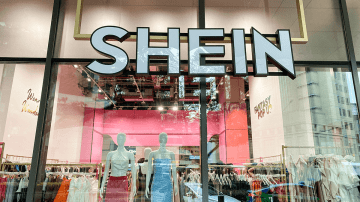This is an episode of the Glossy Beauty Podcast, which features candid conversations about how today’s trends are shaping the future of the beauty and wellness industries. More from the series →
Subscribe: Apple Podcasts • Spotify
“I believe that every great brand should evolve its look and feel about every five years,” said Katherine Power, serial entrepreneur and the founder of Versed skin care. “Since our launch in 2019, we’ve seen that our core customer, who is primarily an older millennial or young Gen X — I call them Xennials — has really grown along with us, and we wanted to continue to grow with them and to create something fresh and modern.”
This included a refresh of packaging, visuals and language overseen by Lola Gonzalez Marra, Versed’s longtime creative lead. Power and Marra have worked together for more than a decade on Power’s many entrepreneurial projects, including editorial sites WhoWhatWear and Byrdie — which Power launched with Hillary Kerr in 2006 and 2013, respectively — as well as color cosmetics line Merit, which Power founded in 2021.
“We decided we needed to evolve enough that it’s a change, but not so much that you go on Versed one day and it’s a completely different brand,” said Marra. As Power and Marra explained on this episode of the Glossy Beauty Podcast, the refresh has been in the works for over a year.
Versed was launched in 2019 from data and insights learned at Byrdie and WhoWhatWear, which Power and Kerr have since sold to publisher Dotdash in 2019 and publisher Future Brands in 2022, respectively.
Thanks to Versed’s omnichannel strategy where 75% of its sales are through its wholesale accounts like Target, switching over merchandise has required a unique strategy. Hint: Versed is selling off older products DTC for 30% off right now. The team also rolled out tweaks to its social media aesthetic and naming formula for products. The brand also used this as an opportunity to fine-tune the assortment by making product cuts. But perhaps the biggest change is in its packaging colors, which Marra desaturated and leveraged into category IDs, all of which the duo discusses in the podcast episode.
Excerpts from the conversation, below, have been lightly edited for clarity.
On keeping a brand’s image fresh
Power: “The goal came down to evolution, both for us as a brand and for our customer. I believe that every great brand should evolve its look and feel about every five years, whether that’s small tweaks — it can be in your imagery or in your colors — or it’s a complete rebrand, [because] you feel like you maybe started from a place that doesn’t best represent who you are today. Since our launch in 2019, we’ve seen that our core customer, who is primarily an older millennial or young Gen X — I call them Xennials — has really grown along with us, and we wanted to continue to grow with them and to create something fresh and modern but still very identifiably Versed.”
On forming a refresh plan
Gonzalez Marra: “When Katherine and I first started talking about this project and started talking about where this woman is now and what she needs, I split things up into like three territories: We can tinker and refresh just a little bit; we can evolve the brand; or we can go in a totally different direction. Just looking at the assortment, the community and what they were asking us, we knew, obviously, we need to evolve enough that it’s a change, but not so much that you go on Versed one day and it’s a completely different brand.”
On decoding skincare
Gonzalez Marra: “We made our colors more desaturated, a little dustier, but we also gave them a purpose. We use them to organize our assortment between your essential products, your cleansers, your moisturizers and then your solvers, [like our] serums. For example, retinol is now all the same rose color and hydration is all blue. So as we made changes to the look and feel of the brand, we were also looking for opportunities to use our visual ID and make things simpler and decode her skin care routine, so that when she’s looking at her vanity or standing at the aisle trying to figure out what she needs, it’s easier for her to identify what goes where.”




